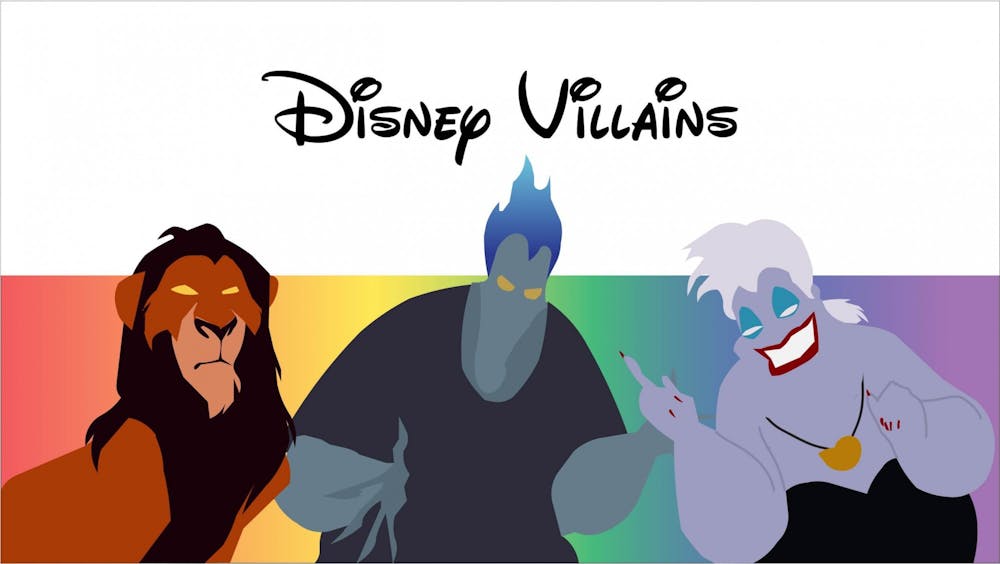Whether you loved or feared them as a child, the villains of beloved animated films aren’t characters you’ll forget any time soon. Their unique character designs, sassy comebacks and exaggerated gestures have cemented them into a generation of childhood minds. But these characteristics aren’t just for comedy’s sake-- many of them point to the harmful phenomenon of queercoding. Queercoding is when traits and mannerisms typically associated with the LGBTQ+ community are assigned to a character in order to subtextually code them as queer. This concept is not new, though it has gained critical attention as the issue of LGBTQ+ representation in the media has become more mainstream. This is harmful because it creates the association between queerness and immorality in a society that still struggles with positive queer representation.
Queercoding villains is likely as old as modern film itself. In an effort to “save” Hollywood’s image after a series of progressive works in the 1920s, Will H. Hays, chairman of the Motion Picture Producers and Distributors of America, worked with Catholic priests to create a production code. The code, referred to as the Hays Code, listed the guidelines that film studios could use to self-censor. I spoke to Dr. Mark Cooper, who teaches Film and Media History at UofSC, about the kinds of things the code prohibited.
"'Any inference of sex perversion' is prohibited in the 1927 draft. The specific phrasing is interesting. 'Sex perversion' covers a lot of ground," Dr. Cooper says. "Note that the prohibition is against 'any inference.' That is, filmmakers at the time were more apt to allude to or imply all those interesting 'perversions' than they were to depict them explicitly." Dr. Cooper went on to explain the consequences of the Hays Code. "Innuendo flourished. Audiences were encouraged to imagine that characters got up to all manner of unrepresentable mischief between the cuts."
What kind of mischief? Anything that could be portrayed as “immoral” by the general public, including behaviors not typically associated with straight, white, cisgender men.
Disney, the creator of countless iconic films, has been accused of queercoding many of their animated villains. The character design of Ursula from The Little Mermaid is known to be inspired by a drag queen named Divine. Her deep voice and desire to turn into a “real woman” at the end of the film are evidence that Ursula is queercoded to reflect stereotypes of drag queens at the time. Captain Hook is an example of the long list of male villains with effeminate traits, and his obsession with Peter Pan is a thinly-veiled reference to the long-held belief that homosexual men have pedophilic tendencies. Even animals can be queercoded, and the proof is in The Lion King. Scar and Mufasa demonstrate the same tactics used to queercode other villains. Mufasa is portrayed as masculine as a lion can be - strong shoulders, broad nose, while Scar has a slight, narrow build. He can even be seen doing the exaggerated hand gestures still associated with gay men.
Protagonists in films are also queercoded, most of the time for comedic purposes. The Lion King’s Timon is a great example when he suggests dressing in drag. Timon’s voice actor, Nathan Lane, as well as many other members of Disney’s animation department, are open members of the LGBTQ+ community, which can make it tricky to determine the motives of queercoding characters. While it may be unintentional, there are real, harmful effects of children seeing themselves in a disproportionate amount of villains who often end up dead or banished.
Riley J. Dennis is a queer content creator who dives deep into these consequences on her YouTube channel. "Queer youth can begin to see themselves as Other – as something that’s not normal and something that’s to be defeated," she explains. "Non-queer youth, likewise, find it easier to demonize queer people because that’s already the association they have with queerness." On the flip side, many LGBTQ+ individuals are thankful for any representation at all and see these characters as powerful and inspiring. Terra Necessary, a queer writer and activist, says it best: "They may be stereotypical, murdering hot messes, but they’re OUR stereotypical, murdering hot mess."
Either way, it is not a coincidence that many of the traits we see portrayed as red flags, laughable or annoying in the media are stereotypes of the queer community. As representation increases in the future, the need for queercoding villains, or any character, will be eliminated as more characters are allowed to be openly queer and establish themselves through authentic writing, not overused stereotypes.



